Ditapis dengan

Membina Calon Pimpinan (Sepuluh Prinsip Pokok)
Daftar isi: 1. Mengembangkan para pemimpin dalam sepuluh langkah 2. Beberapa perkembangan dalam pelatihan kepemimpinan
- Edisi
- -
- ISBN/ISSN
- -
- Deskripsi Fisik
- -
- Judul Seri
- -
- No. Panggil
- 353.001-Ada-m
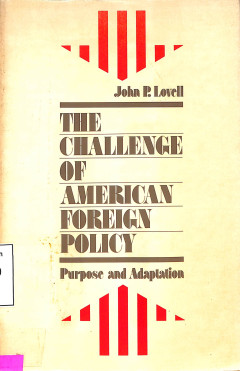
The Challenge of American Foreign Policy
Daftar isi: 1. Foreign policy: the nature of the challenge 2. Foreign policy and the imperative of purposeful adaptation 3. The foreign policy process in a new era 4. Conclusions
- Edisi
- -
- ISBN/ISSN
- 0-02-371800-5
- Deskripsi Fisik
- -
- Judul Seri
- -
- No. Panggil
- 353.0089-Lov-c
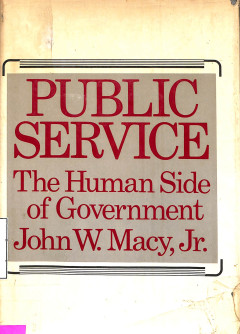
Public Service
Daftar isi: 1. Dimensions of american public service 2. The anatomy of merit 3. Public service by contract 4. The meaning of public careers 5. Government seeks the college talent 6. Making equal opportunity a reality 7. Every day is ladies day 8. Emphasizing ability not disability 9. Public employment as an instrument of social change 10. Labor-management relations in the public servi…
- Edisi
- -
- ISBN/ISSN
- -
- Deskripsi Fisik
- -
- Judul Seri
- -
- No. Panggil
- 353.001-Mac-p
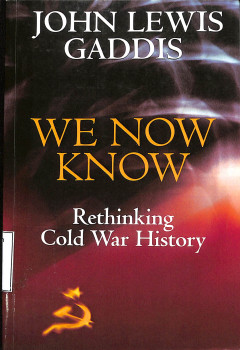
We Now Know, Rethinking Cold War History
Daftar Isi One Dividing the World Two Cold War Empires: Europe Three Cold War Empires: Asia Four Nuclear Weapons and the Early Cold War Five The German Question ...
- Edisi
- -
- ISBN/ISSN
- 978-0-19-878071-7
- Deskripsi Fisik
- -
- Judul Seri
- -
- No. Panggil
- 327.1-Joh-W
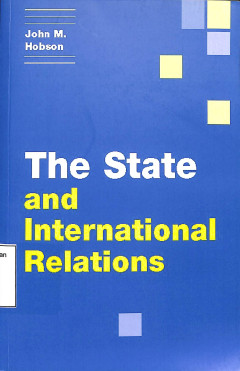
The State And International Relations
Daftar Isi 1. What's at stake in the 'second state debate'? Concepts and issues 2. Realism 3. Liberalism 4. Marxism 5. Constructivism 6. Weberian historical sociology ...
- Edisi
- -
- ISBN/ISSN
- -
- Deskripsi Fisik
- -
- Judul Seri
- -
- No. Panggil
- 327.09-Joh-S
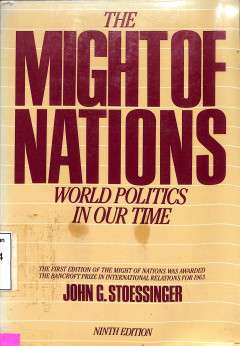
The Might of Nations. World Politics in Our Time
Daftar Isi Part 1 The Nature of International Relations Part 2 The International Struggle for Power Part 3 The International Struggle for Order Part 4 Toward a Theory of International Relations
- Edisi
- -
- ISBN/ISSN
- 0-07-540919-4
- Deskripsi Fisik
- -
- Judul Seri
- -
- No. Panggil
- 327.0904-Sit-m

Dont Rock the Boat
Daftar Isi Part I. The Potential for Delay Part II. The Military Significance of Delayed Reinforcement Part III. Alternative Deployment and Basing Options Part IV. Conclusions
- Edisi
- -
- ISBN/ISSN
- 0-8330-0960-5
- Deskripsi Fisik
- -
- Judul Seri
- -
- No. Panggil
- 327.1-Lun-d
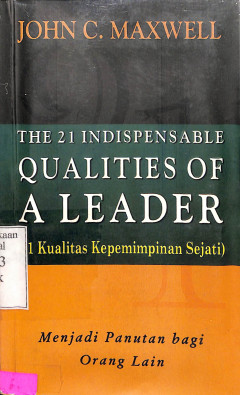
The 21 Indispensable Qualities Of A Leader (21 Kualitas Kepemimpinan Sejati)
Mempelajari hukum-hukum kepemimpinan itu adalah bagian dari pengembangan seorang pemimpin.
- Edisi
- -
- ISBN/ISSN
- -
- Deskripsi Fisik
- -
- Judul Seri
- Menjadi Panutan Bagi Orang Lain
- No. Panggil
- 303.3-Max-t
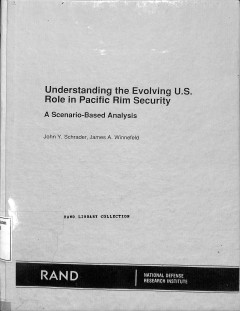
Understanding the Evolving U.S. Role in Pacific Rim Security
Daftar Isi 1. Introduction 2. Pacific Rim Combat Scenarios 3. Force Posture Alternatives 4. Impact of Alternative U.S. Postures 5. Findings and Policy Recomendations ...
- Edisi
- -
- ISBN/ISSN
- 0-8330-1240-1
- Deskripsi Fisik
- -
- Judul Seri
- -
- No. Panggil
- 327.1-Sch-u
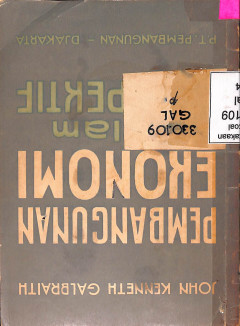
Pembangunan Ekonomi Dalam Perspektif
DAFTAR ISI PEMBANGUNAN EKONOMI DALAM PERSPEKTIF JANG SEDANG BERKEMBANG DAN JANG SUDAH MADJU TENTANG TEORI PERJANJIAN PEMBANGUNAN PENDIDIKAN DAN PEMBANGUNAN EKONOMI ALAT PRODUKSI
- Edisi
- -
- ISBN/ISSN
- -
- Deskripsi Fisik
- -
- Judul Seri
- -
- No. Panggil
- 330.109-Gal-p
 Karya Umum
Karya Umum  Filsafat
Filsafat  Agama
Agama  Ilmu-ilmu Sosial
Ilmu-ilmu Sosial  Bahasa
Bahasa  Ilmu-ilmu Murni
Ilmu-ilmu Murni  Ilmu-ilmu Terapan
Ilmu-ilmu Terapan  Kesenian, Hiburan, dan Olahraga
Kesenian, Hiburan, dan Olahraga  Kesusastraan
Kesusastraan  Geografi dan Sejarah
Geografi dan Sejarah